Imagine transforming your office into a lush, green sanctuary, even if your workspace is tucked away in a dimly lit corner. Whether you’re just starting your gardening journey or have years of experience nurturing plants, our guide to the best plants for a low-light office is your key to success. These extraordinary plants not only survive but thrive in the shadows, bringing life and vibrancy to your workspace without demanding too much attention.
For anyone who’s ever doubted their green thumb, this guide offers a treasure trove of practical tips and plant picks that will boost your confidence and fill your office with nature’s beauty. From enhancing air quality to providing a calming, stress-relieving environment, the benefits of incorporating these resilient companions into your office are manifold. Let the joy of gardening indoors inspire you, and take the first step toward creating a verdant oasis that will thrive even in the most challenging lighting conditions.
Snake Plant (Air-Purifying Powerhouse)
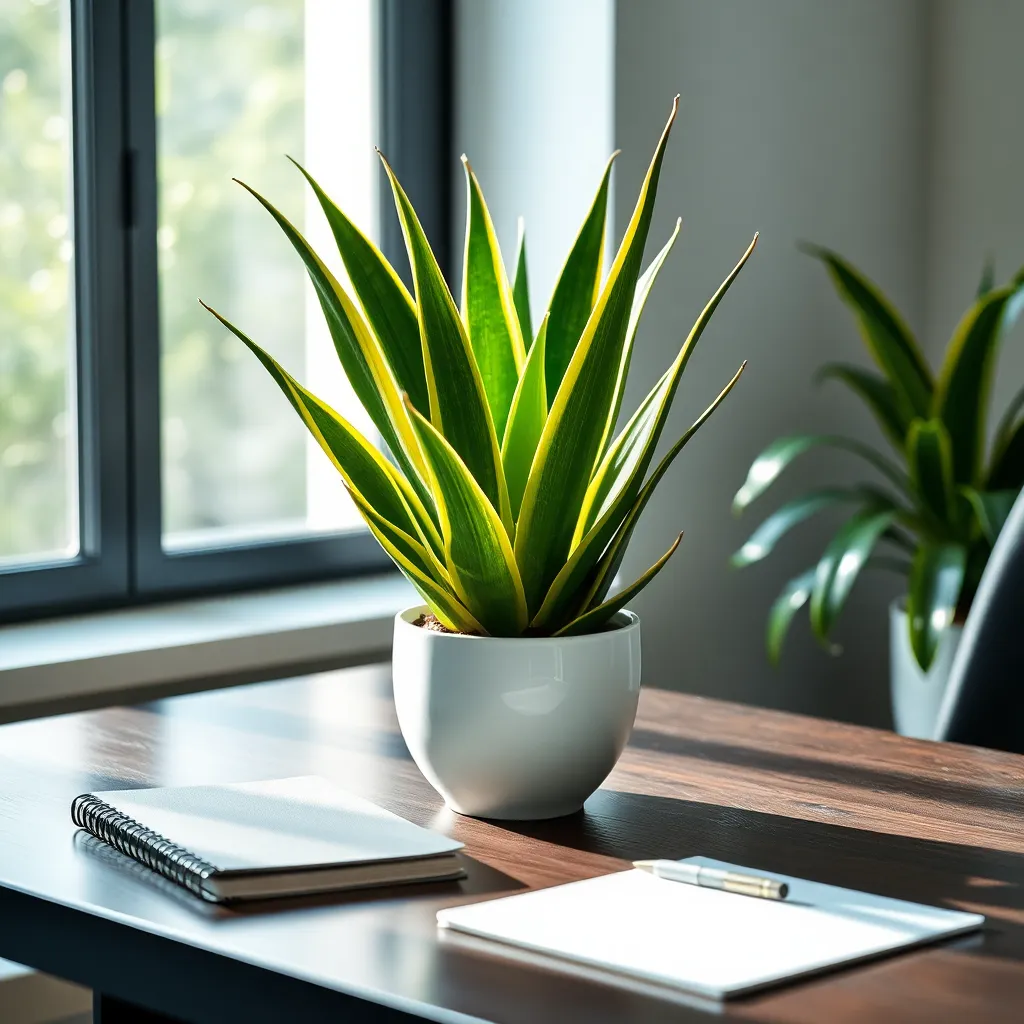
Snake plants, also known as Sansevieria, are ideal for low-light offices due to their hardy nature and air-purifying capabilities. They thrive in indirect light but can also tolerate darker conditions, making them perfect for indoor environments with limited sunlight.
For beginners, it’s best to plant snake plants in a well-draining potting mix, such as a combination of regular potting soil and perlite. This ensures that the roots do not remain waterlogged, which can lead to root rot.
Watering needs are minimal, as snake plants prefer their soil to dry out completely between waterings. A good rule of thumb is to water them every two to six weeks, depending on the humidity levels in your office.
Advanced gardeners can experiment with propagation by dividing the rhizomes, which is a simple way to multiply your collection. Simply cut the rhizomes with a clean, sharp knife and replant them in fresh soil, ensuring each division has at least one leaf and a root.
Pothos Vine (Trailing Elegance)
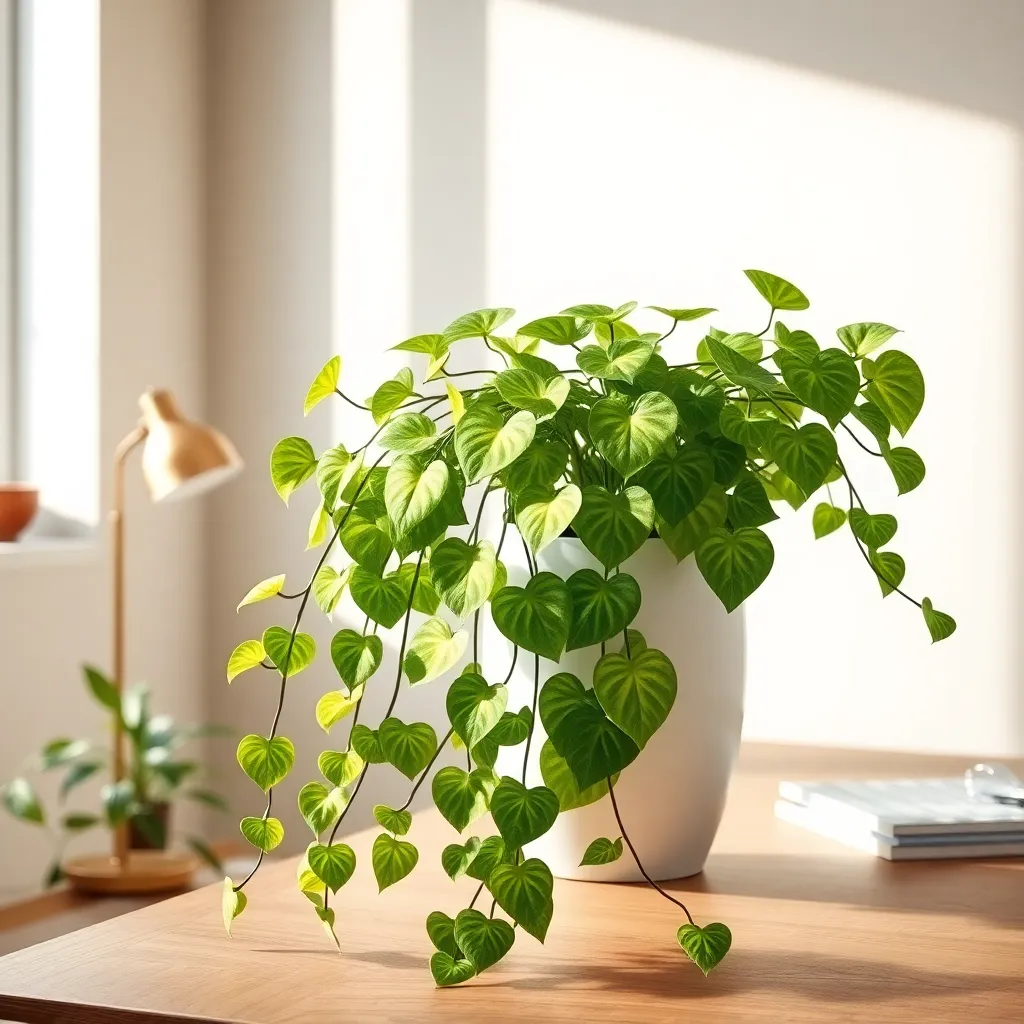
Pothos vines, known for their vibrant green leaves and trailing elegance, are an excellent choice for a low-light office environment. These plants thrive with minimal light, making them perfect for spaces without direct sunlight.
Watering your pothos is straightforward, as they prefer their soil to dry out completely between waterings. A good rule of thumb is to check the soil moisture once a week and water only when the top inch is dry.
For optimal growth, use a well-draining potting mix, such as a blend containing peat moss and perlite. This ensures that the roots have access to air and don’t become waterlogged, preventing root rot.
Advanced gardeners might consider propagating their pothos by taking cuttings and rooting them in water or soil. This not only helps to maintain the plant’s shape but also provides an opportunity to share its beauty with friends or coworkers.
ZZ Plant (Low-Maintenance Resilience)
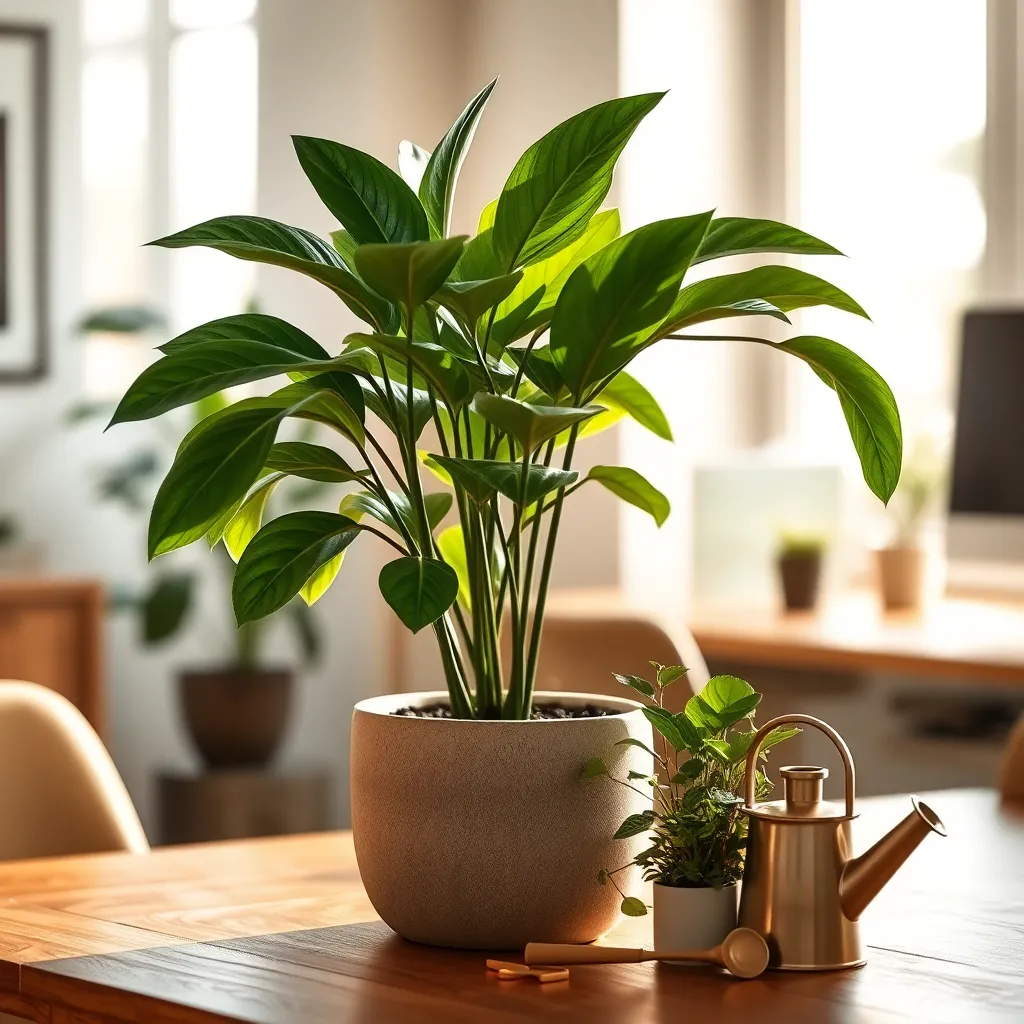
The ZZ Plant, known for its low-maintenance resilience, is perfect for a low-light office environment. It thrives in areas where other plants might struggle, making it a great choice for busy professionals.
Place the ZZ Plant in indirect light to ensure its leaves maintain their deep green color. However, it can also tolerate low-light conditions, which makes it ideal for rooms with limited natural light.
Watering is a breeze with this plant, as it only needs to be watered every two to three weeks. Allow the soil to dry out completely between waterings to prevent root rot, which is a common issue if overwatered.
For those looking to give their ZZ Plant a little extra care, consider using a well-draining potting mix with perlite or sand. This will help maintain the right moisture level and prevent water from pooling around the roots.
Advanced gardeners might enjoy propagating the ZZ Plant by dividing its rhizomes or using leaf-cutting techniques. Both methods are straightforward and rewarding, offering a simple way to expand your plant collection or share with friends.
Peace Lily (Blooming in Dim Spaces)
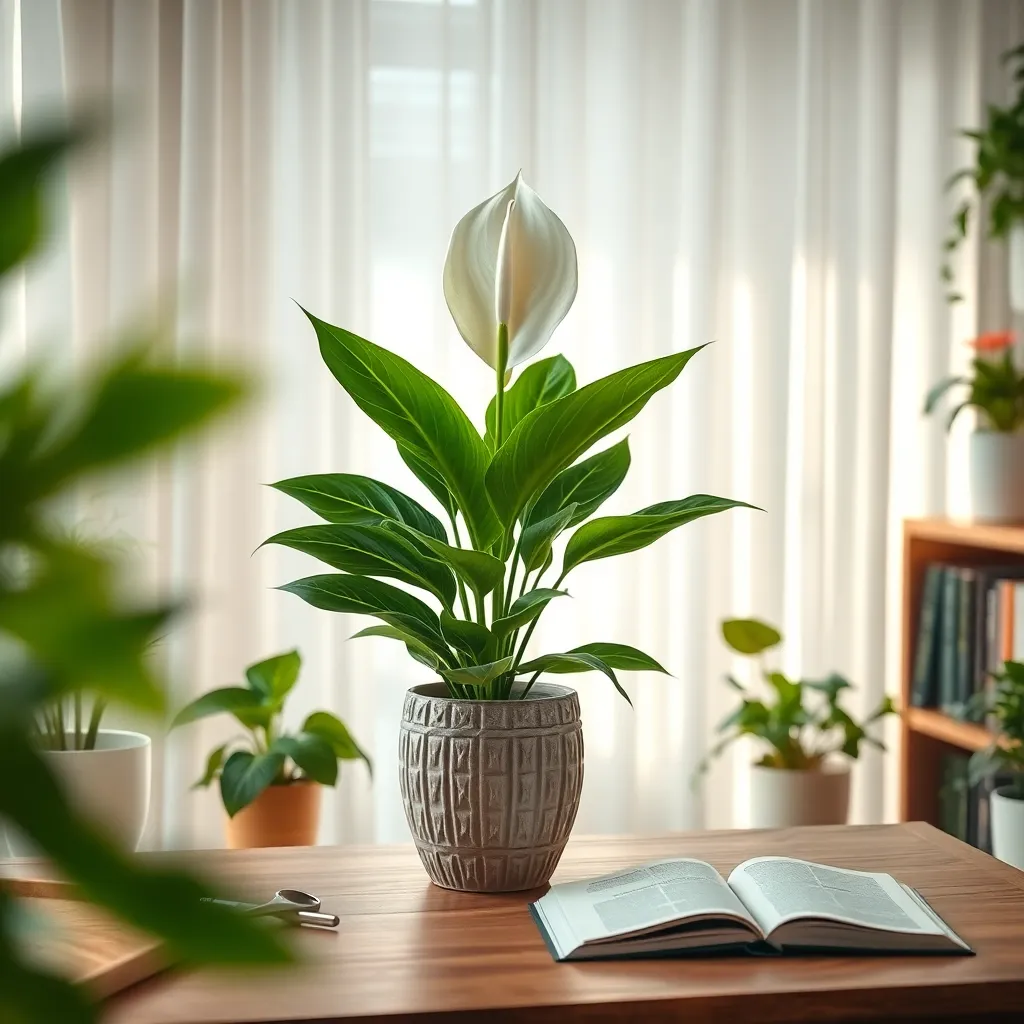
The Peace Lily is an ideal choice for those looking to bring a touch of nature into their dimly lit office spaces. Known for its elegant white blooms, this versatile plant thrives in low-light conditions, making it perfect for areas with little natural light.
To ensure your Peace Lily flourishes, water it only when the top inch of the soil feels dry. Over-watering can lead to root rot, so it’s crucial to use a pot with drainage holes and a well-draining potting mix, such as a blend of peat moss and perlite.
Peace Lilies also benefit from a monthly feeding during the growing season with a balanced liquid fertilizer. Avoid placing them near cold drafts or heating vents, as these can stress the plant and hinder its growth.
For advanced care, gently wipe the leaves with a damp cloth to remove dust and allow the plant to breathe better. If your Peace Lily’s leaves start to droop, it usually signals it’s time to water, offering a built-in reminder system for busy office workers.
LED Grow Lights (Simulate Natural Sunlight)
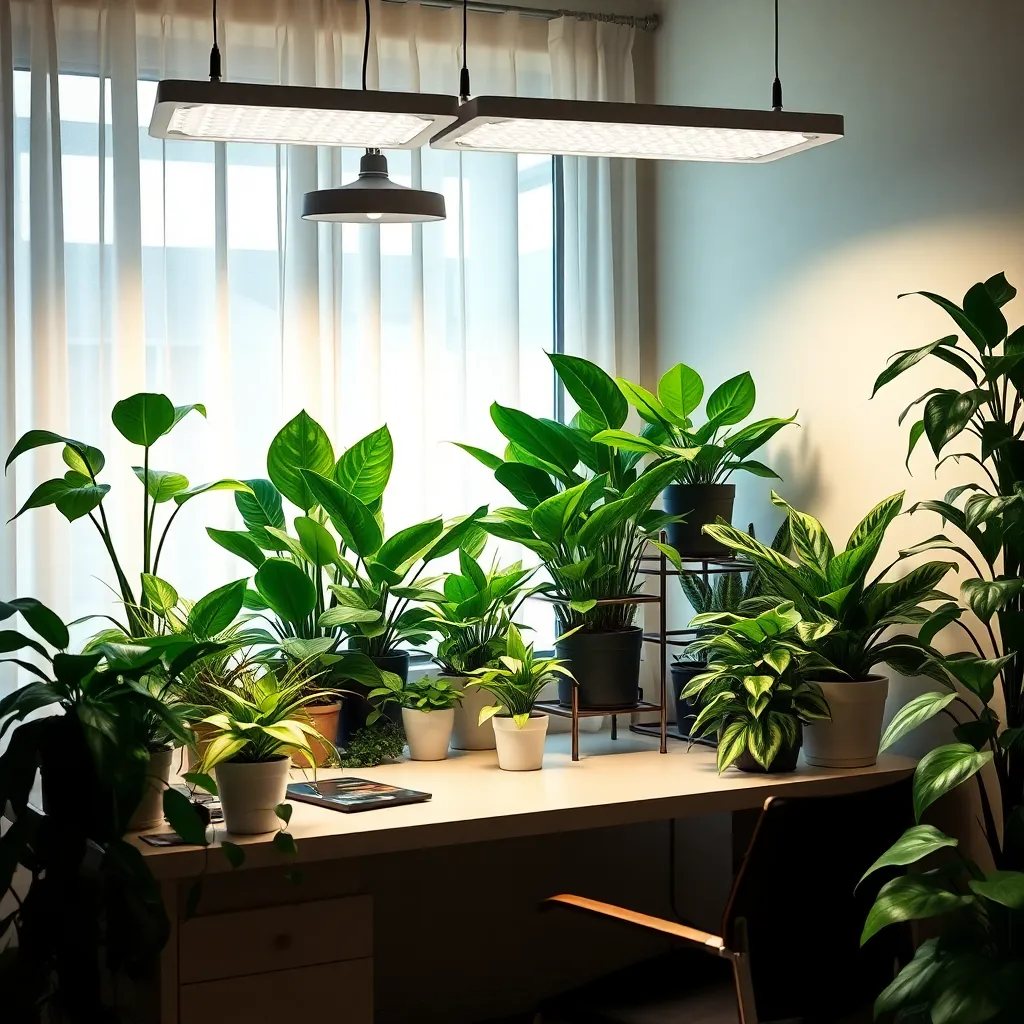
While natural light is ideal, LED grow lights can be a fantastic substitute for low-light office environments. These lights mimic the full spectrum of sunlight, promoting healthy plant growth even in the absence of natural light.
Consider positioning LED grow lights about 12 to 18 inches above your plants for optimal results. Adjust the height as the plants grow to maintain their health and vigor, ensuring they receive the right intensity of light.
It’s important to set a schedule for your plants, generally aiming for around 12 to 16 hours of light per day. This will help simulate a natural day-night cycle, which is crucial for the photosynthesis process and overall plant health.
For those seeking an advanced approach, invest in LED lights with adjustable spectrums to tailor the light to specific growth stages. During the vegetative phase, focus on blue light, and switch to red light when encouraging flowering or fruiting.
Conclusion: Growing Success with These Plants
In cultivating a harmonious office environment, the right plants can not only enhance aesthetic appeal, but also foster stronger workplace relationships. This article explored five key concepts: the transformative power of peace lilies in purifying air, the resilience of snake plants for thriving in low light, the calming influence of pothos on stress reduction, the nurturing nature of ZZ plants that require minimal attention, and the rejuvenating benefits of spider plants in enhancing creativity. Each of these plants serves as a metaphor for nurturing and maintaining healthy relationships, reminding us that with the right care, even the most challenging environments can flourish.
As a next step, choose one of these adaptable plants to introduce into your workspace today. Observe not just how it brightens your office, but also how it may subtly improve your interactions and relationships at work.
Remember, relationships, much like plants, need ongoing care and attention to thrive. Bookmark this article to revisit these insights as you continue your journey toward relational success. By investing in these small yet meaningful changes, you are paving the way for a future filled with more connected and fulfilling relationships.
